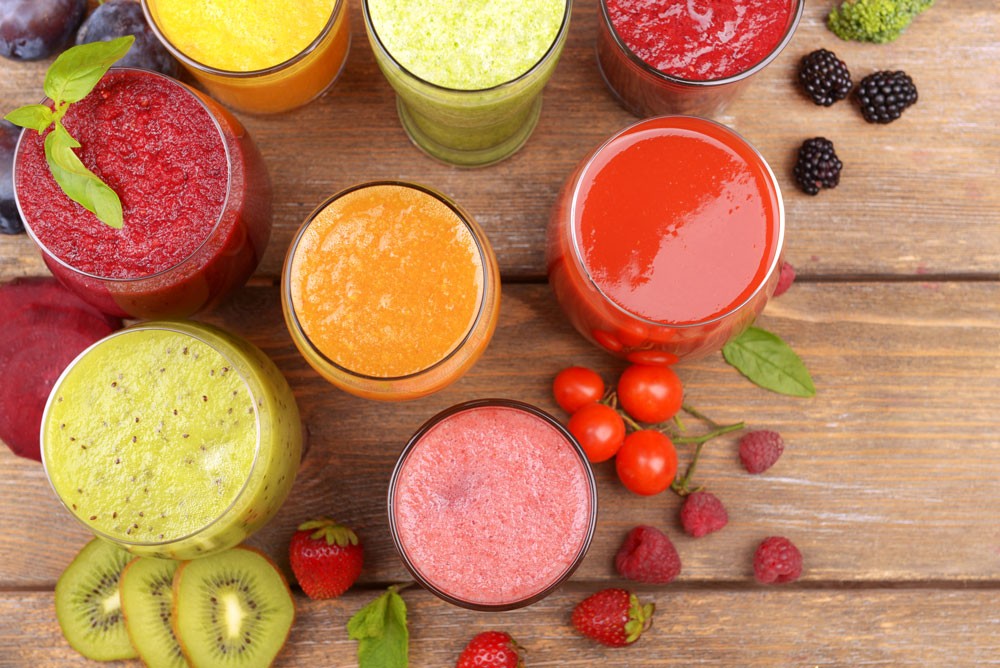Juicing for “cleansing”, “detoxing” or weight loss has been trendy for some years now. But does it really work and is it good for you? We take a look at the pros and cons.
Pros
Fruits and vegetables can help reduce risk of many chronic diseases, including heart disease and some types of cancers. Juicing makes it easier for you to consume the recommended daily intake of five to nine servings of fruit and vegetables. Almost any fruit or vegetable can be juiced and provide you with vitamins and nutrients you might otherwise miss out on.
It also allows you to try fruits and vegetables you may not normally eat. You can get creative and juice your own combinations or try some of the many recipes that can be found online.
Your body can easily absorb the nutrients as it takes less energy for it to digest juices than solid foods.
Juicing can help keep your brain healthy. According to a 2006 study by Vanderbilt University, drinking fruit and vegetable juices over three times per week can reduce the risk of developing Alzheimer’s by 76%.
Cons
Juicing removes insoluble fiber and proteins from fruits and vegetables while you need proteins to build and maintain muscle mass and your liver needs protein to function.
Fiber cleans the digestive tract, and your gut microbiota, which influence your immunity level, feed on fiber.
The fiber also slows down the absorption of fructose – the sugar found in fruits – in your blood. Since your body easily absorbs fructose, fruit juices can cause a spike in blood sugar. So, if you’re diabetic, don’t consider a juice cleanse as part of your diabetic diet plan.
Fruit juices in particular tend to have a high acid content which can damage the enamel of your teeth. Although fruit and vegetables are healthy acids, this is true only when you eat them whole.
Certain foods high in vitamin K, such as kale and spinach, may affect the effectiveness of blood thinning medication.
Not all juices are equal, and many commercially prepared juices are processed, heated, thinned, filtered or have added sugars. Such juices do not offer the same nutrition levels as 100% pure juice of whole fruits and vegetables.
Our recommendations
Juicing is a good way to increase your intake of fruits and vegetables. Consider it a supplement to a balanced diet.
Keep sugar levels and calorie content down by juicing mainly with vegetables, for example 80% vegetables and 20% fruit.
Clean fruits and vegetables to avoid bacteria and pesticides before juicing them. You can soak them for 10 minutes in 3-part water to 1 part vinegar or add a few tablespoons of baking soda to the water instead of the vinegar. Rinse them well with clean water.
Fresh juices can develop bacteria and it is best to drink any juice you prepare straight away. The nutrient levels are also far higher in freshly pressed juice.
Add some of the pulp back into the juice in order not to lose all the fiber.
If you buy your juice instead of preparing it yourself, choose 100% juice, without added sugars.
Drink fruit juice with a straw, so that the acid does not come in contact with your teeth.
If you’re taking prescription medication, check with your doctor before regularly adding juices to your diet.
Trying to detox? Your body naturally detoxes every day, and you can help this process by eliminating alcohol, processed foods, bad fats and sugar from your diet to reduce toxins in your body. Then add the juice for an extra dose of vitamins!

